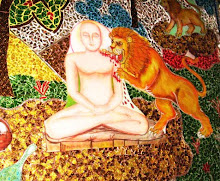
 Today I came home to the sound of chainsaws. Were my senses more acute, I’m sure the sound of pleading trunks and branches would have accompanied them. No, I am not a tree hugger. But I *am* an avid recycler and life long fan of oxygen.
Today I came home to the sound of chainsaws. Were my senses more acute, I’m sure the sound of pleading trunks and branches would have accompanied them. No, I am not a tree hugger. But I *am* an avid recycler and life long fan of oxygen. So when I see the vertical plane of my backyard landscape about to be permanently altered, I’ll admit, my blood starts to simmer. Several infant maples, and 2-3 full growns were massacred all because my neighbour’s shed roof was threatened by a few branches.
Until this morning, I considered myself quite lucky. Despite the strong presence of insects, over-abundance of shade and double-duty of raking come fall, I love my backyard jungle. How many average income, central city home-owners have the window scenery of a cottage in the convenience of an urban location? As of yesterday, at least one.
You know what? Call me a tree hugger. Call me a leaf lover. A trunk hag. A root wench or a branch bitch. Because not only have my trees given my privacy, property value and a cat scratching alternative to livingroom furnishings, they give anyone in range the following:
- Carbon dioxide absorption.
- Wind barriers that reduce the heating costs of nearby homes.
- Shading that reduces cooling costs.
- Mood boosts. (Proven psychological impact that can help in emotional and physical healing.)
- Sound insulation.
- Pretty birds.
In talking with the tree cutters I learned that a little advanced planning and strategic redirection of new growth – when my neighbour first built the shed two years ago – would have prevented all of this. My now naked south side (reminder: we’re still talking property here) looks like a barren, cemetery of wood. A stark scene of arbourcide.
Thankfully, I still have lots of other greenery. At least for now. Said neighbour has already eyed another one she wants down.


























